Refuge and Revival: An Interview with Anahita Amouzegar
Irani-born, Anahita Amouzegar is an abstract artist whose vibrant artworks often exhibit feminine figures. Through sharing her art, Anahita aims to express her past experiences and ignite spiritual growth.
We caught up with Anahita to discuss the personal trials and tribulations that ultimately led her to become a professional artist. Also, check out this week’s curation showcasing Anahita’s current favourite artworks on Bluethumb.
Within her Melbourne-based home studio, Anahita paints with acrylic on canvas in her unique personal style. No stranger to colour, she sits at her easel, surrounded by bright canvases showcasing the figures of her imagination.
When asked about her first memory of art, Anahita recalls a family car trip to visit her cousin in Iran’s capital, Tehran. “I remember I was about five or six years old, looking out the window and drawing the surrounding nature with coloured pencils on paper while we were driving.”
“It’s a pleasant memory. I remember feeling so connected to something, maybe to myself or the light escaping through the tree branches.”
Born To Be An Artist
Anahita believes some people are born artists; their urge to create is innate and ever-present. Ever since she can remember, Anahita has dreamt of becoming an artist. “Throughout my childhood, I always had a pencil in my hand. To draw was my favourite way to communicate,” she said.
Anahita’s parents supported her passion and encouraged their daughter to pursue an Advanced Diploma in Visual Arts. However, not long after starting at Fasa University, Anahita was forced to flee her birth country and build a new life in Australia.
Finding Refuge In Art
Confronted by a foreign reality, twenty-three-year-old Anahita turned to art as a coping mechanism and to seek solace for her mental health.
Anahita became discouraged from pursuing an art career, due to the financial strain of moving and being unable to complete her diploma. She worked in different fields for six years until COVID-19 turned her world upside down.
“Lockdowns created an immediate and profound shift in my life, allowing me time and space to create art again… I realised I am at my happiest when creating art. And that was my turning point to start practising art professionally.”
An Intuitive Creative Process
Anahita describes her abstract process as freeing and unrestricted from notions of right and wrong. “In the abstract, I can think less about the end [artwork] and more about creating and expressing myself.”
She begins an artwork by making intuitive marks on the canvas. “How I feel that particular day influences the colours I choose and the stroke of the brush. Once I understand the core message, I develop a story and plan composition, colour, and symbolic elements,” she said.
Feminine Renasenece Through Subject
Anahita’s acrylic paintings often feature women depicted in entrapment or liberation. This mirrors the repressive experiences she endured in Iran and the emancipation she discovered in Australia. “A major factor in choosing a feminine figure as the subject matter in my paintings is an attempt to reconcile my feminine side,” she said.
“Having grounded women figures somehow defines the idea of a place or location, but nothing specific, achieving a balance between what we define as real and imagined.”
Wow, what a woman! Shop Anahita’s wishlist by checking out this week’s curation, where you’ll discover a personally hand-picked selection of Anahita’s favourite works on Bluethumb.

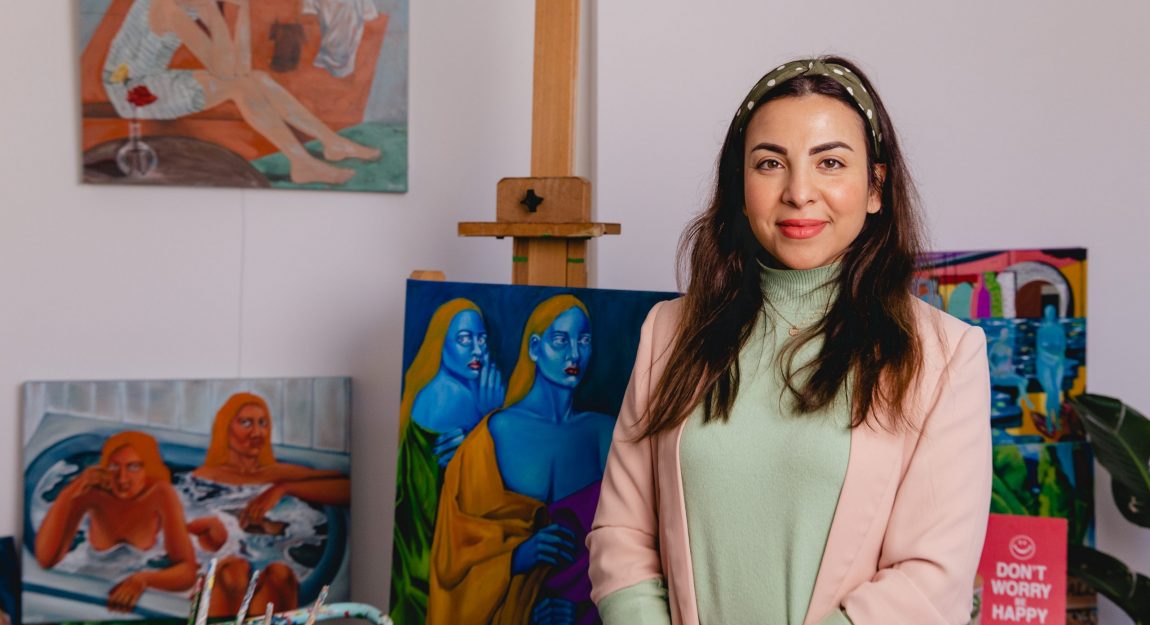


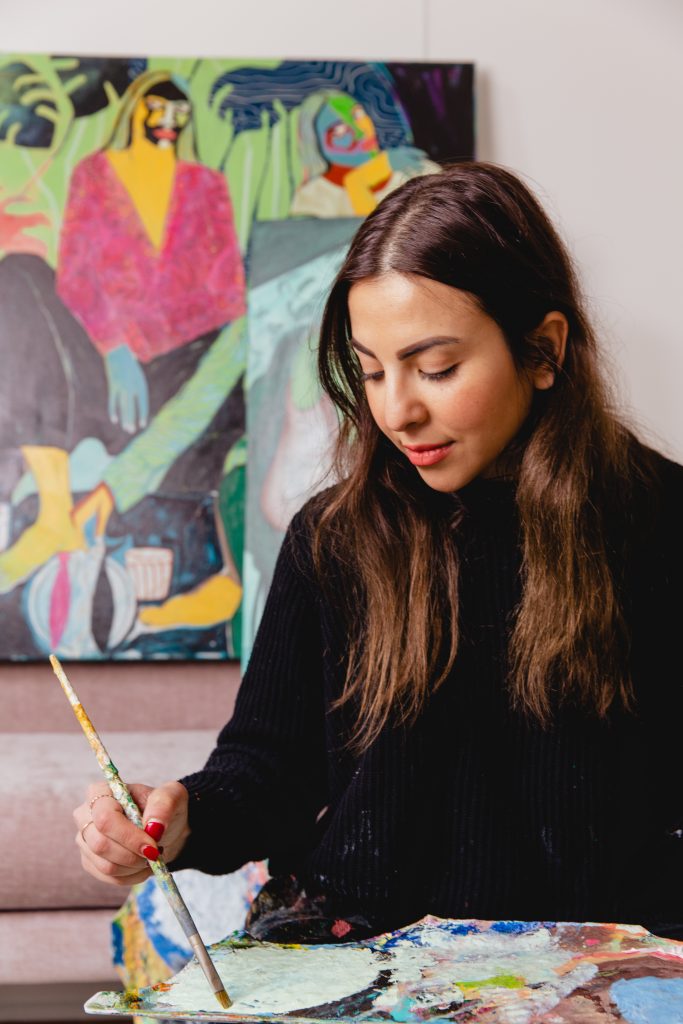
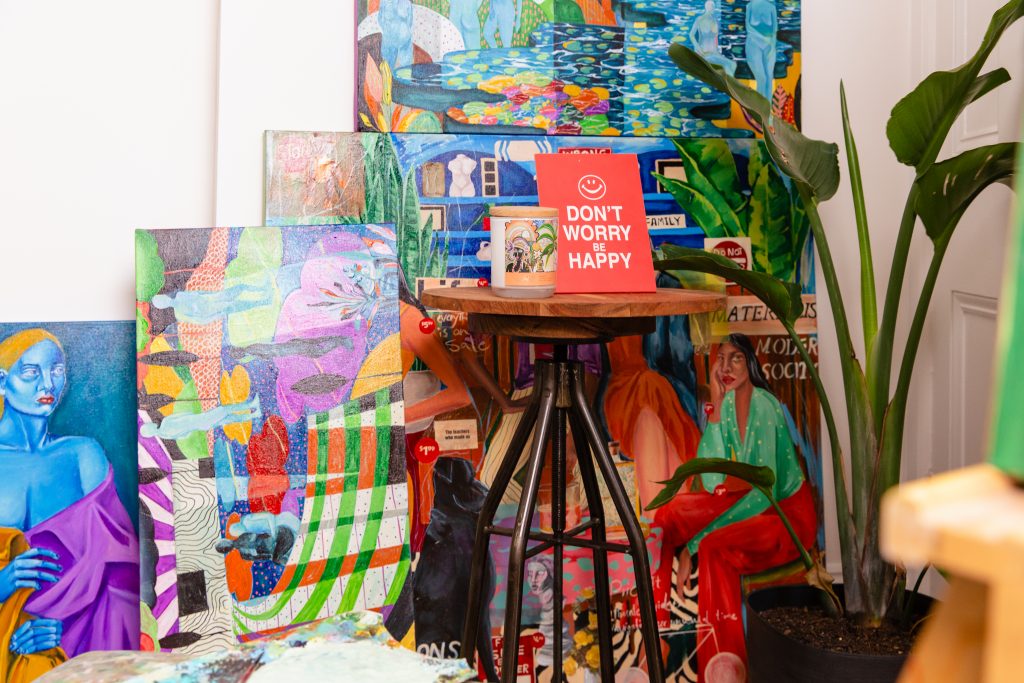
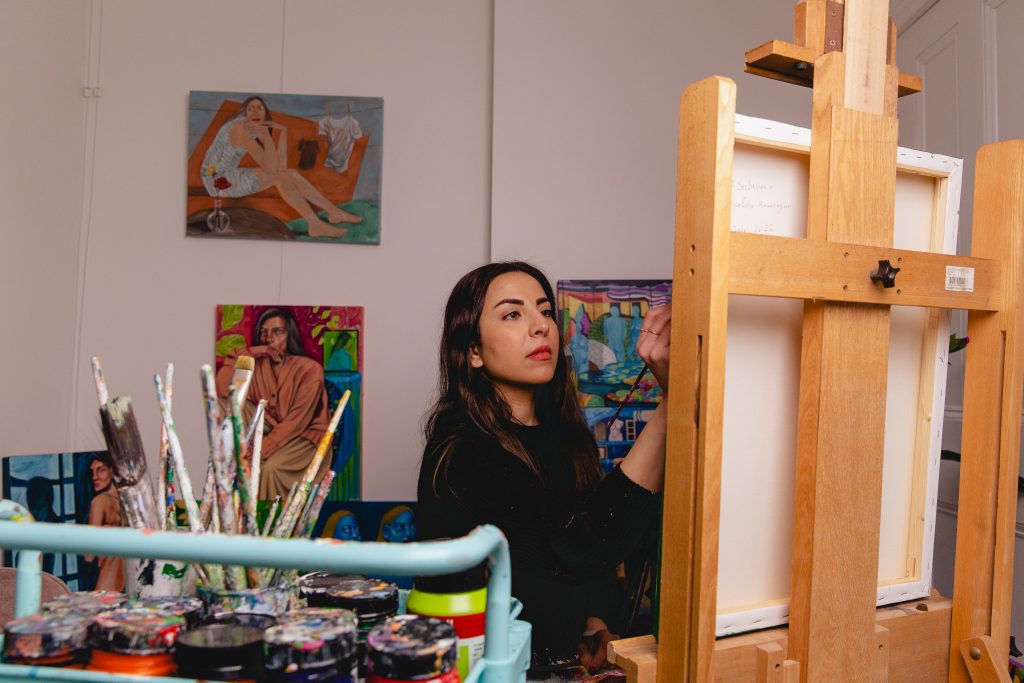
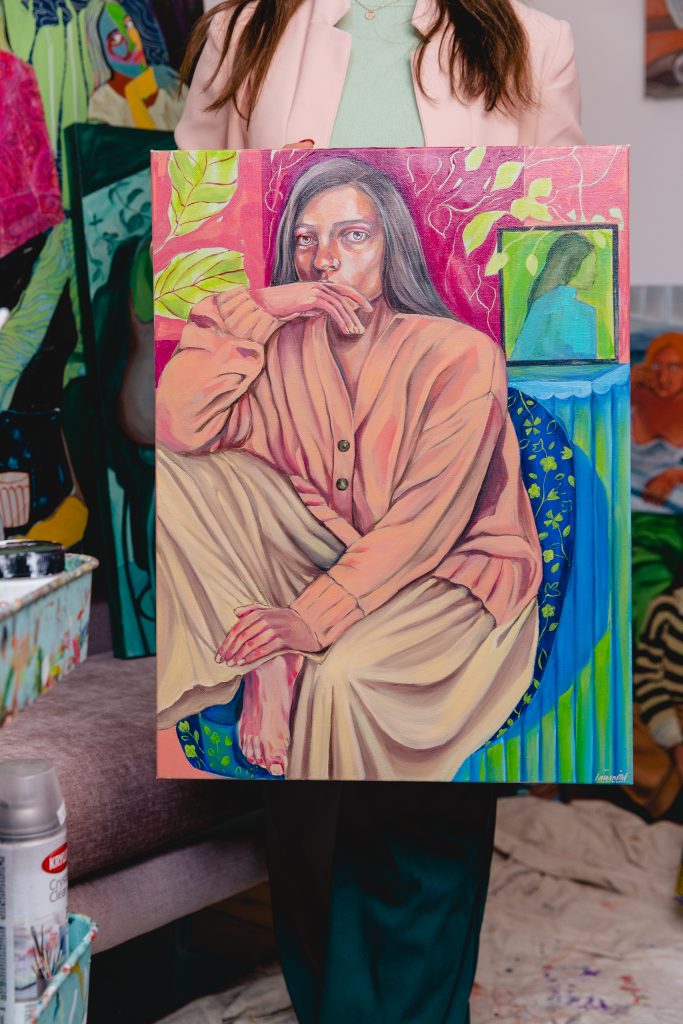
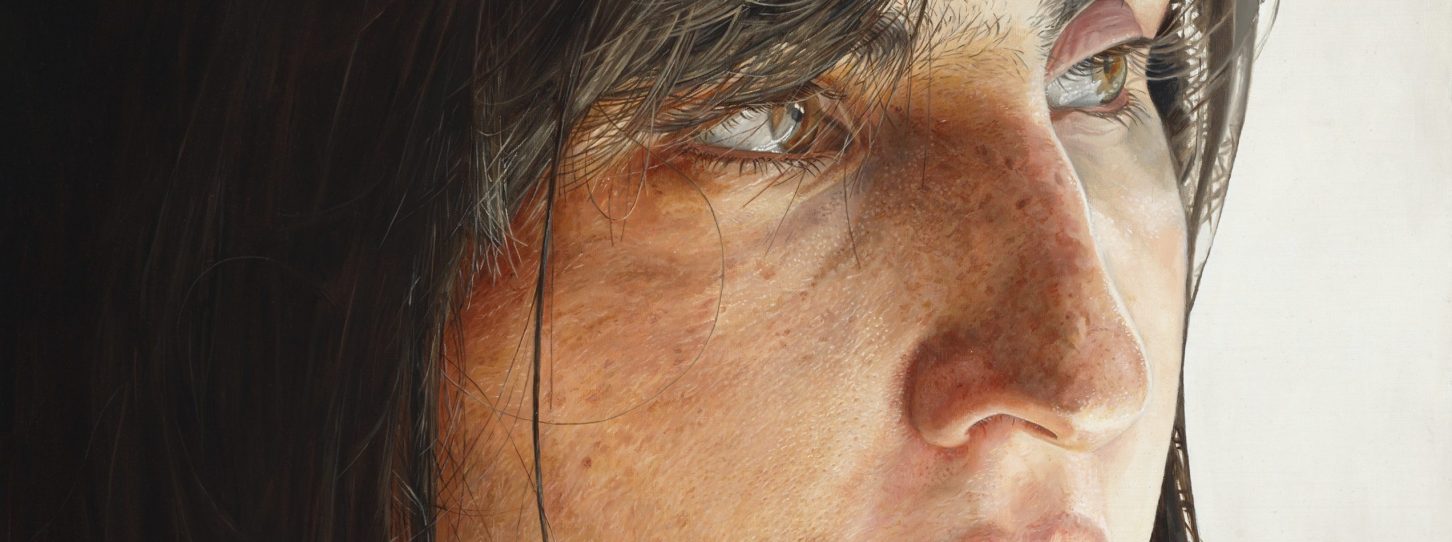
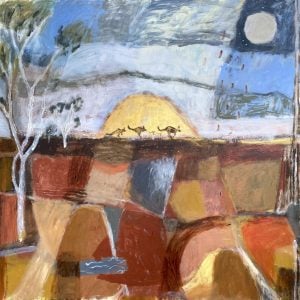

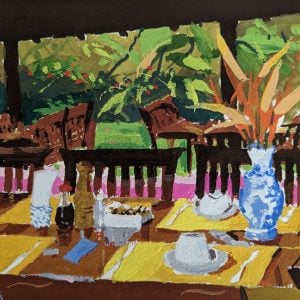






So proud of you Ana keep up the great work 👏